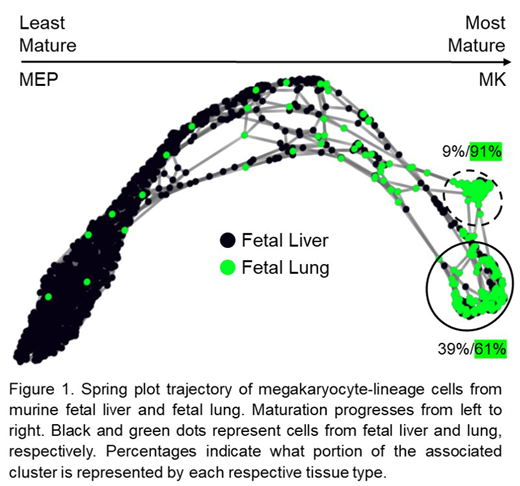Megakaryocytes (MKs) are responsible for producing anucleate platelets which are indispensable due to their roles in hemostasis, growth and development. Recent studies have also demonstrated the influence of platelets in regeneration and immune protection, thus highlighting the functionality of platelets beyond their classically defined roles. Standard models of thrombopoiesis emphasize that MK development occurs initially in the fetal liver during development, followed by long-term residency in sites of adult hematopoiesis such as the bone marrow sinusoids. Outside of the hematopoietic system, MKs have been shown to reside in the interstitium of the lung, with emerging evidence pointing to the lung microvasculature as a specialized environment that may support a significant bulk of platelet production. However, little is known about how MKs traffic to the lung and whether they are influenced by the lung microenvironment to become functionally distinct from their hematopoietic counterparts. To characterize the transcriptional signature of lung-resident MKs, we performed single cell RNA sequencing (scRNA-Seq) on primary MKs derived from syngeneic mouse lung and hematopoietic tissues. Samples were processed to obtain single cell suspensions, followed by flow cytometry to enrich for CD41 positive cells and prepared for scRNA-Seq using the 10x genomics platform. scRNA-Seq analysis revealed a developmental trajectory starting from megakaryocyte erythroid progenitors (MEPs) and ending in two distinct clusters of mature MKs which were made up of mostly lung derived MKs (Fig. 1). One of these mature clusters was made up of 91% lung MKs and possessed a unique gene enrichment profile, including marked upregulation of platelet factor 4 (PF4) and enrichment for cellular processes related to ATP production and translation. To further profile lung-resident MKs, we performed flow cytometric assessment of ploidy and maturation markers. In comparison to bone marrow derived MKs, lung derived MKs displayed a distinct ploidy profile with a significantly increased number of cells expressing CD42, a marker of MK maturation. Collectively, these findings suggest that the subset of MKs found within the lung may be in a more mature and metabolically active state to potentially facilitate increased platelet output. These studies may shed new light on the process of MK maturation, including what triggers MK endoreplication, and may advance methodologies for in-vitro platelet production. Based on the symbiotic relationship between the lung and the hematopoietic system, our ongoing studies are focused upon the interplay between the lung and resident MKs in the developmental and functional patterning of both tissue types.
No relevant conflicts of interest to declare.
Author notes
Asterisk with author names denotes non-ASH members.


This feature is available to Subscribers Only
Sign In or Create an Account Close Modal